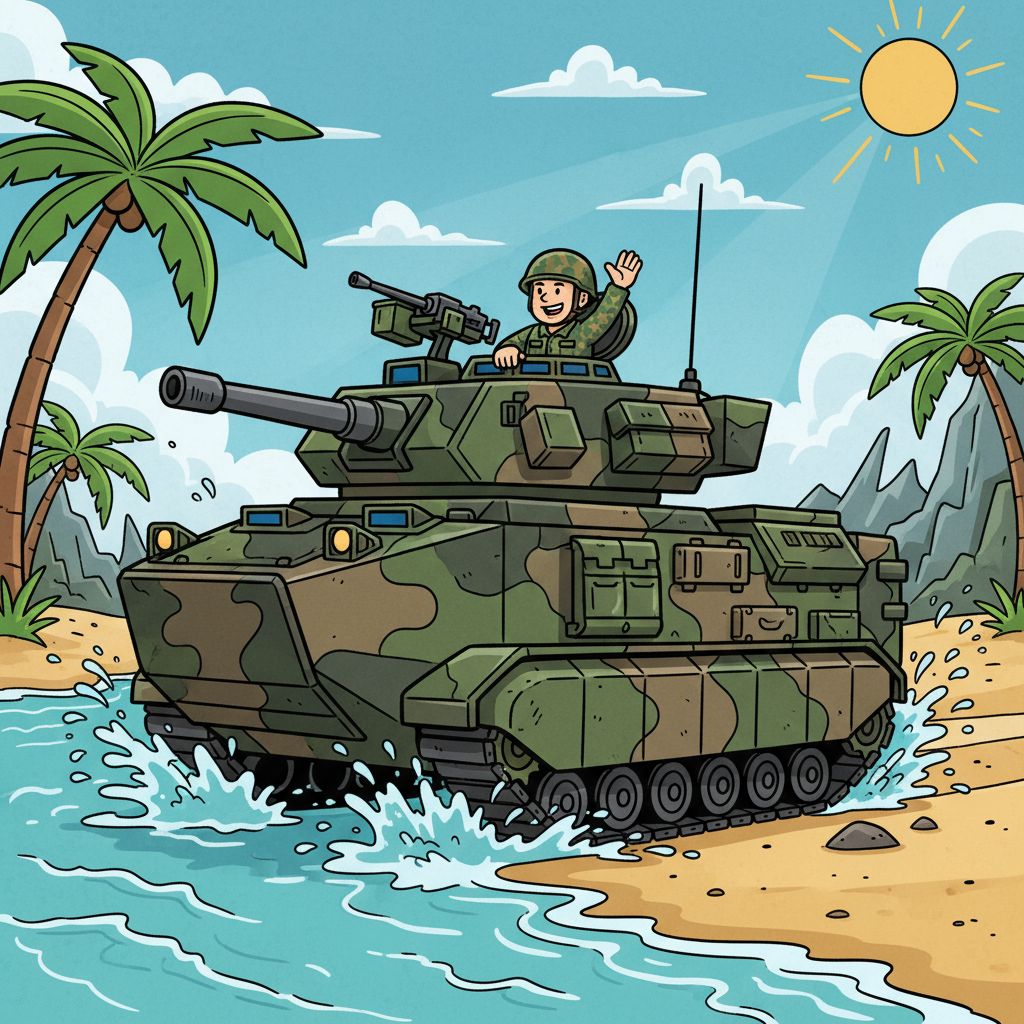Have you ever wondered how armed forces seamlessly transition from sea to land during military operations? The key lies in the AAV vehicle, or Assault Amphibious Vehicle. In 2026, these vehicles stand at the forefront of amphibious technology, combining superior mobility, protection, and versatility that serve both military and evolving commercial applications. Whether for military strategists, commercial buyers, or technology enthusiasts, understanding AAV vehicles is crucial—their capabilities enhance both operational success and safety on land and water.
What Is an AAV Vehicle?
An Assault Amphibious Vehicle (AAV) is a military vehicle designed to transport troops and equipment from ship to shore and beyond. It is built to operate in both water and rugged terrain, enabling rapid deployment during amphibious assaults.
-
Typically tracked or wheeled, with watertight hulls
-
Equipped with propulsion systems like water jets for aquatic mobility
-
Armored for protection against small arms and shrapnel
-
Used primarily by US Marine Corps and allied forces worldwide
The current generation includes the aging AAV7 and is transitioning to modern replacements such as the Amphibious Combat Vehicle (ACV).
Key Features of AAV Vehicles in 2026
Superior Amphibious Capability
AAV vehicles are engineered to perform missions in diverse environments:
-
Efficient water propulsion allowing movement in sea states up to 3
-
Transition seamlessly between water and rough land terrains
-
High speed and endurance on land (e.g., 72 km/h max speed)
Enhanced Protection and Survivability
-
Armored hulls protect troops from ballistic threats
-
Blast-mitigating designs to improve crew safety from mines and IEDs
-
Modularity allows upgrading armor systems per mission needs
Advanced Technological Integration
-
Remote weapon systems and fire control for precision
-
Situational awareness through integrated sensors and communication
-
Semi-autonomous and remote operation features under development
Market Trends in AAV Vehicles 2026
-
The AAV market size was estimated at over $4.4 billion in 2026, with robust growth projected through 2035.
-
Transition from older AAV platforms to next-gen ACVs is a strategic priority for marine corps worldwide.
-
Technological trends highlight hybrid propulsion systems, AI-enhanced control, and improved survivability.
-
Increased interest in commercial and humanitarian applications such as disaster relief and exploration.
Types of Amphibious Vehicles Related to AAV
Tracked Amphibious Vehicles
Tracked vehicles like the AAV7 offer superior mobility over challenging terrains and shallow waters, ideal for heavy-duty military uses.
Wheeled Amphibious Vehicles
Wheeled variants like the ACV provide enhanced speed, lower maintenance needs, and versatility for modern combat scenarios.
Hovercraft and Air-Cushioned Vehicles
Hovercraft expand operational reach by effortlessly traversing over land and water, primarily for specialized military and rescue missions.
Who Uses AAV Vehicles?
-
Military Users: Primarily US Marine Corps, allied forces, and countries upgrading amphibious capabilities.
-
Commercial Buyers: Disaster response agencies and industries working in coastal and watery environments.
-
Technology Enthusiasts & Developers: Innovators focusing on advanced mobility and autonomous vehicle technology.
Advantages of AAV Vehicles for Mission Success
-
Rapid Deployment: Quick transition from ship to shore enables surprise and tactical advantage.
-
Versatility: Suited for varied terrains — from beaches and rivers to rough lands.
-
Crew Safety: Armored protection with modern blast mitigation enhances survival chances.
-
Future-Ready: Incorporating AI and advanced sensors to support next-level combat readiness.
How to Choose the Right AAV Vehicle for Your Needs
-
Assess mission requirements: amphibious range, load capacity, and terrain.
-
Consider whether tracked or wheeled vehicles better suit operational context.
-
Evaluate available technological features like remote turret control or AI assistance.
-
Keep future upgradeability in mind — modular designs extend service life.
Frequently Asked Questions (FAQs)
1. What is the primary function of an AAV vehicle?
AAVs transport troops and equipment from sea to shore, allowing amphibious assaults and mission continuity on land.
2. How does the AAV differ from the Amphibious Combat Vehicle (ACV)?
While AAVs are tracked older models, the ACV is an 8×8 wheeled next-gen vehicle with improved amphibious speed, protection, and electronics.
3. Can AAV vehicles be used for civilian applications?
Yes, some modified amphibious vehicles support disaster response, exploration, and specialized transport tasks.
4. What propulsion systems do AAVs use?
AAVs typically use water jets for aquatic movement along with diesel engines for land mobility.
5. Are there autonomous versions of AAV vehicles?
Research and development are ongoing to incorporate autonomous and remote control capabilities in future models.
Conclusion: The Future of Amphibious Mobility with AAV Vehicles
The AAV vehicle continues to represent a pivotal asset in amphibious operations in 2026 and beyond. Its blend of amphibious capability, crew protection, and evolving technology ensures that it remains crucial for military and select commercial roles. With market growth fueled by defense investments and innovation, amphibious vehicles are adapting to future challenges with increasing sophistication.
For anyone interested in cutting-edge mobility solutions—whether military or commercial—the evolution of AAV vehicles offers exciting possibilities ahead. Exploring procurement or partnerships today can position operations for longer-term success.











